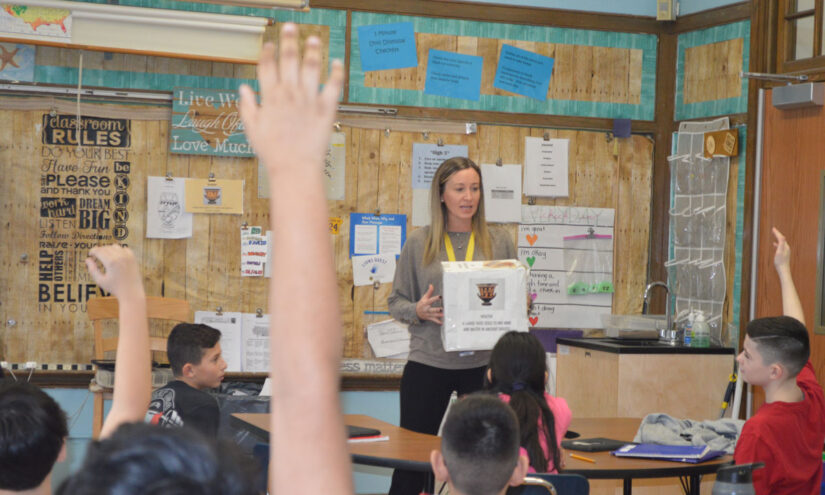During this summer, a team of students from MIT embarked on a journey to the sou …
Two Teachers Utilize AI to Enhance Lesson Building and Save Time
Emma Wordsmith

In Franklin Square, New York, sixth-grade students at John Street School engaged in a lesson on ancient Greek vases dressed in casual attire, similar to students in any other social studies class. Teachers Janice Donaghy and Jean D’Aurio, however, took a unique approach to lesson preparation, utilizing artificial intelligence to streamline the process. The use of AI significantly reduced the time spent on lesson planning, with D’Aurio noting that classroom preparation time was reduced from hours to seconds.
By leveraging AI tools such as Canva and Diffit, the teachers seamlessly crafted a comprehensive lesson plan on ancient Greek vases, complete with reading passages at varying levels of complexity, multiple choice questions, and engaging student activities. The students not only learned about the historical significance of these vases but also participated in hands-on activities, such as painting their own designs on actual vases, enhancing their understanding of the subject matter.
According to Superintendent Jared Bloom of Franklin Square School District, the potential of AI in education extends beyond streamlining lesson planning to personalizing learning experiences for students. As educators explore the possibilities of AI tools like ChatGPT, there is a growing recognition of their role in reducing teachers’ workload outside the classroom, from creating lessons to grading assignments.
AI for Education CEO Amanda Bickerstaff emphasized the efficiency gains that AI brings to the education sector, citing teachers’ average workload of eight to 10 hours per week on planning and administrative tasks. In response to this challenge, educators in Franklin Square have embraced AI applications to enhance their teaching practices and enrich student learning experiences.
D’Aurio and Donaghy, described as “tech nerds,” paved the way for their colleagues to adopt AI tools by demonstrating the benefits of these technologies in creating tailored lesson materials and tracking student progress effectively. The inclusive classroom they co-teach benefits from AI tools that align with individualized learning plans, enabling more targeted instruction and assessment for each student.
Despite initial concerns about the impact of AI on education, teachers like Donaghy have found practical applications for AI tools, such as assisting non-English-speaking students by providing translated lesson content. Through trial and experimentation, educators are discovering the versatility and ease of use of AI applications, encouraging their peers to explore these innovative tools to enhance teaching practices.
While the integration of AI in education presents new opportunities for personalized learning and efficiency gains, educators recognize the need for caution to prevent misinformation and uphold student privacy. As AI tools continue to evolve, educators remain optimistic about the transformative potential of technology in enhancing learning outcomes for students.


